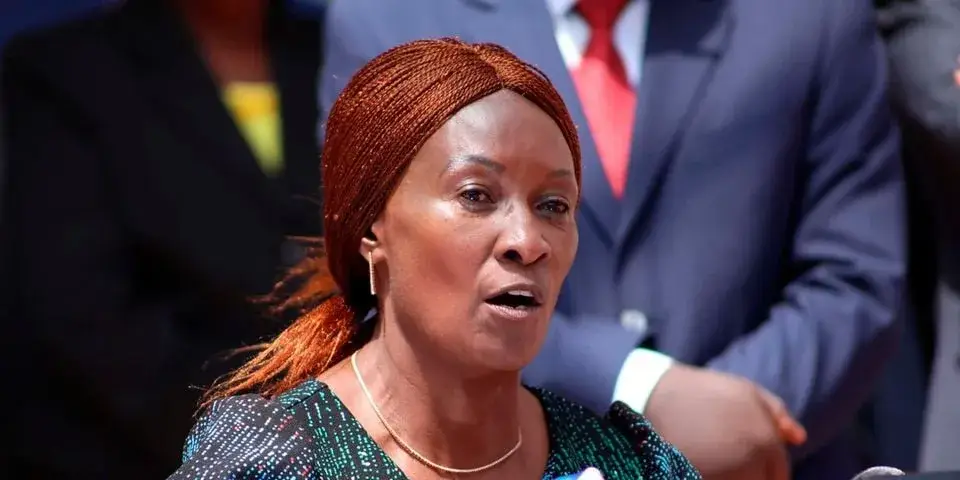TSC, Ministry of Education Begin Nationwide School Inspections on Teacher Performance and Facilities.
The Teachers Service Commission (TSC) and Ministry of Education officials have commenced a countrywide inspection of schools.
The team conducting the inspections consists of officers from the TSC County and Sub-County Directors, Curriculum Support Officers, as well as Ministry of Education County and Sub-County Directors. Their mission is to assess the quality of education and school facilities.
Although the primary focus is on the readiness of Grade 9 classes, the officials are also examining other essential aspects. These include the quality of sanitation, staffing levels, teacher preparedness, and the availability of teaching and learning materials.
Teachers Required to Prepare Professional Documents
School Heads of Institutions (HOI) have already instructed teachers to prepare and present their professional documents in advance of the inspections.
The documents that need to be updated include Schemes of Work, Lesson Plans, Class Attendance Registers, Progress Records, and Records of Work Covered.
Additionally, school heads and deputies are responsible for maintaining class attendance registers and lesson observation forms to monitor classroom activities in alignment with the teacher appraisal system.
Furthermore, HOIs are required to complete and submit a Performance Contract form to the TSC Sub-County Directors, as per TSC regulations.
This inspection comes just two weeks before the scheduled half-term break, which is set to begin on February 25th and conclude on March 2nd, 2025.
National Learner Registration Process
The Kenya National Examinations Council (KNEC) had previously instructed schools to register Grade 3, 6, and 9 learners for their respective national assessments. Education officials are now monitoring the progress of this registration process.
Grade 3 learners are being registered for the Kenya Early Year Assessment (KEYA), their first national assessment.
Grade 6 learners are preparing for their final primary school assessment, the Kenya Primary School Education Assessment (KPSEA), which will determine their transition to junior secondary in January of the following year.
Meanwhile, Grade 9 learners are being registered for the Kenya Junior Secondary Education Assessment (KJSEA), marking their final evaluation before advancing to senior secondary in January 2026.
KPSEA is scheduled to take place from October 27th to October 30th, 2025, while KJSEA will be conducted from October 27th to November 6th, 2025.
The junior secondary students from the pioneer Competency-Based Curriculum (CBC) cohorts will sit for their final assessment before proceeding to senior secondary school the following year.
The KJSEA results will contribute 60% of the total score, while the School-Based Assessment (SBA) conducted in Grades 7 and 8 will account for 40% of the overall placement in senior secondary.
In 2026, the first CBC cohorts will transition to senior secondary, where they will study for three years, covering Grades 10, 11, and 12. Senior secondary education will be structured around three core learning areas that define learners’ career paths.
These include Arts and Sports Science, Social Sciences, and Science, Technology, Engineering, and Mathematics (STEM).
Core Learning Areas
- Arts and Sports Science: This category is further divided into Arts (Music and Dance, Theatre and Film, and Fine Arts) and Sports Science (Sports and Recreation, and Physical Education). Only 15% of learners nationwide will be placed in this category.
- Social Sciences: Accommodating 25% of learners, this category includes two tracks—Languages and Literature (English Literature, Indigenous Languages, Kiswahili/Kenya Sign Language, Fasihi ya Kiswahili, Arabic, French, German, and Mandarin/Chinese) and Humanities & Business Studies (Christian Religious Education, Islamic Religious Education, Hindu Religious Education, History and Citizenship, Geography, and Business Studies).
- STEM (Science, Technology, Engineering, and Mathematics): This category, which will absorb 60% of students, includes Pure Science (Mathematics, Biology, Chemistry, Physics, and General Science), Applied Science (Agriculture, Computer Science, and Home Science), and Technical Studies (Aviation, Building and Construction, Electricity, Metal Work, Power Mechanics, and Wood Work). The Kenya Institute of Curriculum Development has indicated that Media Technology and Marine and Fisheries Technologies will be introduced as part of the technical studies curriculum.
The Ministry of Education has clarified that students undertaking STEM subjects will be placed in former national schools. Extra County schools will offer Creative Arts and Sports, while Humanities subjects will be taught in all county and sub-county schools.
Read Also: List of Expensive Degree Courses in Kenyan Universities and Their Fees
The National Treasury has so far released Ksh 33 billion in capitation funds. Initially, Ksh 14 billion was disbursed, followed by an additional Ksh 19 billion within a week, allocated to primary, junior, and secondary schools.
Government Spokesperson Isaac Mwaura reassured school heads and principals that the remaining Ksh 15 billion for the current term would be released in due course.
The Kenya Secondary School Heads Association (KESSHA) had earlier raised concerns, warning of possible school closures due to delays in funding disbursement.
TSC, Ministry of Education Begin Nationwide School Inspections on Teacher Performance and Facilities
Follow Teachers Updates on Facebook, LinkedIn, X (Twitter), WhatsApp, Telegram, and Instagram. Get in touch with our editors at [email protected].


Discussion about this post